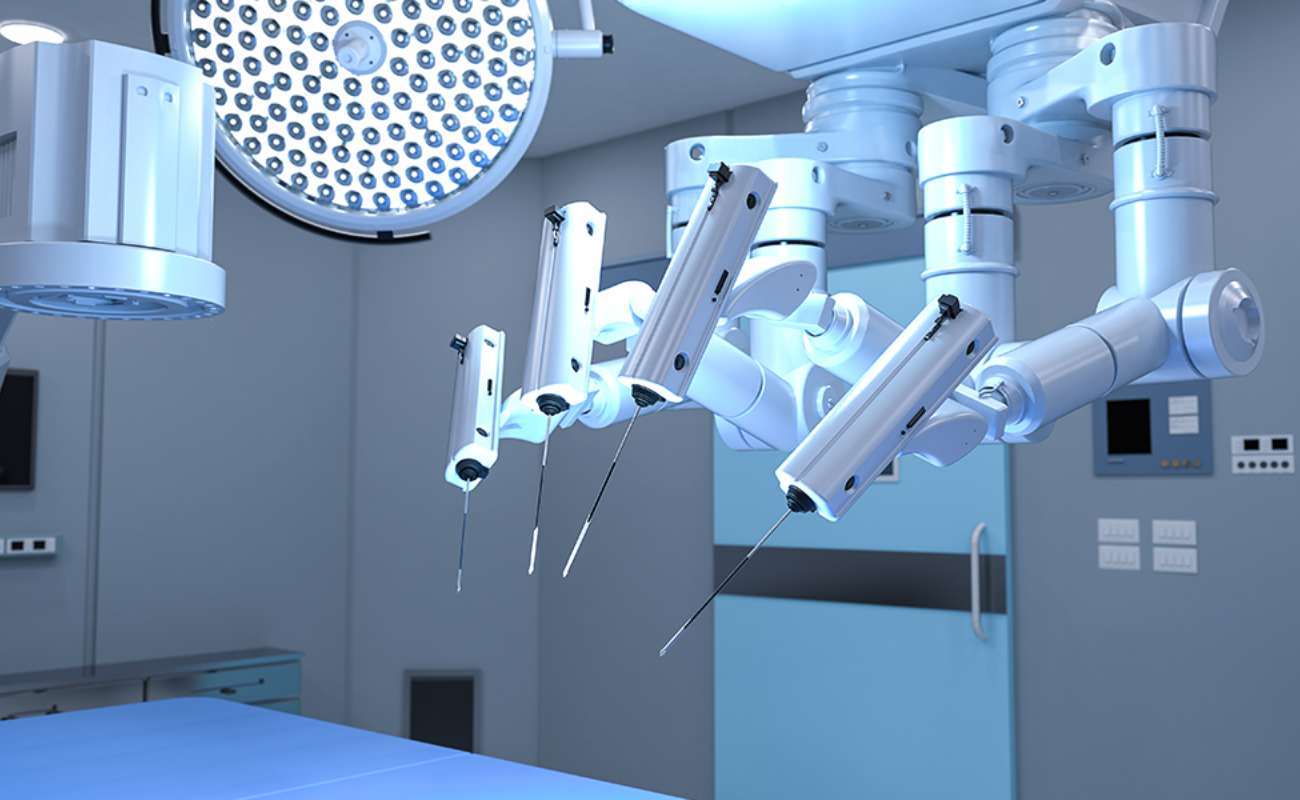Modern Technology Makes Robotic Surgery Safer Than Ever

March 27, 2025
In the world of surgery, one technology that has made waves since its introduction is robotic surgery. It has swiftly moved from novelty to necessity in the medical world. Robotic surgery has changed every surgeon’s approach towards complex procedures, offering patients safer outcomes, a faster recovery, and minimal complications. Today, robotic surgery is championed as a modern medical innovation, revolutionising patient care across various specialities, particularly orthopaedics.
Understanding Robotic Surgery
In robotic surgery, specialised robotic systems are used. They are controlled precisely by a surgeon. These robots are not a replacement but rather an extension of the surgeons.They significantly enhance surgical accuracy. This technology allows surgeons to operate on the patients through tiny incisions using robotic arms. These arms are equipped with miniature surgical instruments and high-definition cameras. This technology allows surgeons control and visualisation during delicate procedures.
Robotic surgery reduces human error while enhancing surgical accuracy. It also ensures positive outcomes in complex procedures such as joint replacements or ligament reconstructions.
Safety with Robotics
While traditional surgeries are effective, they carry the risks of infection and damage to other parts. The higher degree of precision offered by robotic surgery greatly reduces these risks. Its enhanced 3D visualisation allows surgeons to see the anatomy of the human body more clearly. This means easier navigation around nerves, blood vessels, and critical tissues.
Robotic surgery also reduces blood loss and trauma to the surrounding tissue. With minimal scarring and lower degree of postoperative pain, patients get a quicker discharge from the hospital and an overall faster recovery process.
Revolutionising Joint Replacements
When it comes to complex surgical procedures such as joint replacement, robotic surgery has transformed the approach and the scope of the outcome. While traditional surgeries require painful, extensive surgeries followed by longer period of recovery and rehabilitation, for instance, in case of knee and hip arthroplasties, this is completely changed with robotic systems. It allows orthopaedic surgeons the freedom of taking full advantage of advanced imaging techniques, such as CT scans or MRI. These are integrated into robotic systems, allowing a greater degree of clarity in planning the surgical procedure. With robotic surgery, the degree of error with implants gets reduced, thus ensuring they fit perfectly and mimic natural joint movement. This significantly increases the longevity of joint replacements.
Benefits for Patients
A major benefit for the patients is the minimally invasive nature of the surgery. Instead of large, invasive incisions, robotic surgery requires only small punctures. A smaller incision means lesser pain, less swelling and faster healing. Patients also report less discomfort, and a quicker return to daily activities. Hospital stays are shorter, rehabilitation programmes are more effective, and patients enjoy a significant improvement in their quality of life following robotic surgery.
The Proven Advantages of Robotics
Robotic surgery is a subject that has been studied continuously by medical experts. The general opinion is that it greatly reduces complications, including reduced infection rates and promotes faster recovery compared to traditional surgeries.
Robotic technology also aids surgeons in monitoring any complications in real-time. Any unexpected complications that may arise; robotic systems provide immediate feedback. This allows for prompt action to be taken. Robotic surgery ensures better surgical outcomes and higher patient satisfaction. This reflects the safety and reliability offered by robotic systems.
Common Myths Around Robotic Surgery
While the benefits are obvious, like with other technologies, robotic surgery also has its fair share of misconceptions. One myth is that of the surgery being completely robotic without any human touch to it. However, robotic surgery is human-controlled as the surgeon is in control of the robotic arms, while the arms allow better precision while minimising any unwanted risks.
Another myth is that robotic surgery carries a risk of malfunction. However, all the equipment used for robotic surgeries is rigorously tested and approved by medical and governmental bodies. Having proper information about this revolutionary technique can help understand its benefits and assist in embracing it sooner rather than later.
Is Robotic Surgery Suitable for Everyone?
While robotic surgery offers great benefits, patient suitability is vital. Factors like the patient’s health and their medical history. Consulting with a specialist helps in understanding if robotic surgery is required or not and what the approach should be if it is necessary indeed.
Beyond the Robotic Procedure
When it comes to recovery, it does not stop at the physical aspect. Routine physiotherapy, other rehabilitation treatment, and regular follow-up with the doctor are also a part of the recovery process. A planned approach helps patients regain strength and mobility quickly.
Advanced Technology for Life-Long Joint Health
Robotic surgery is a true game changer in the medical industry. The higher degree of precision, safety, and patient satisfaction it offers is unmatched. Its minimally invasive nature offers enhanced accuracy and recovery times.
Dr Kunal Patel, a distinguished orthopaedic surgeon based in Chennai, specialises in robotic and minimally invasive joint surgeries. His expertise in cutting-edge robotic techniques ensures patients receive personalised care while undergoing a safer procedure followed by a positive outcome. Under his guidance, you can be rest assured that robotic surgery becomes not just a modern option but the safest route to reclaiming your active lifestyle.
